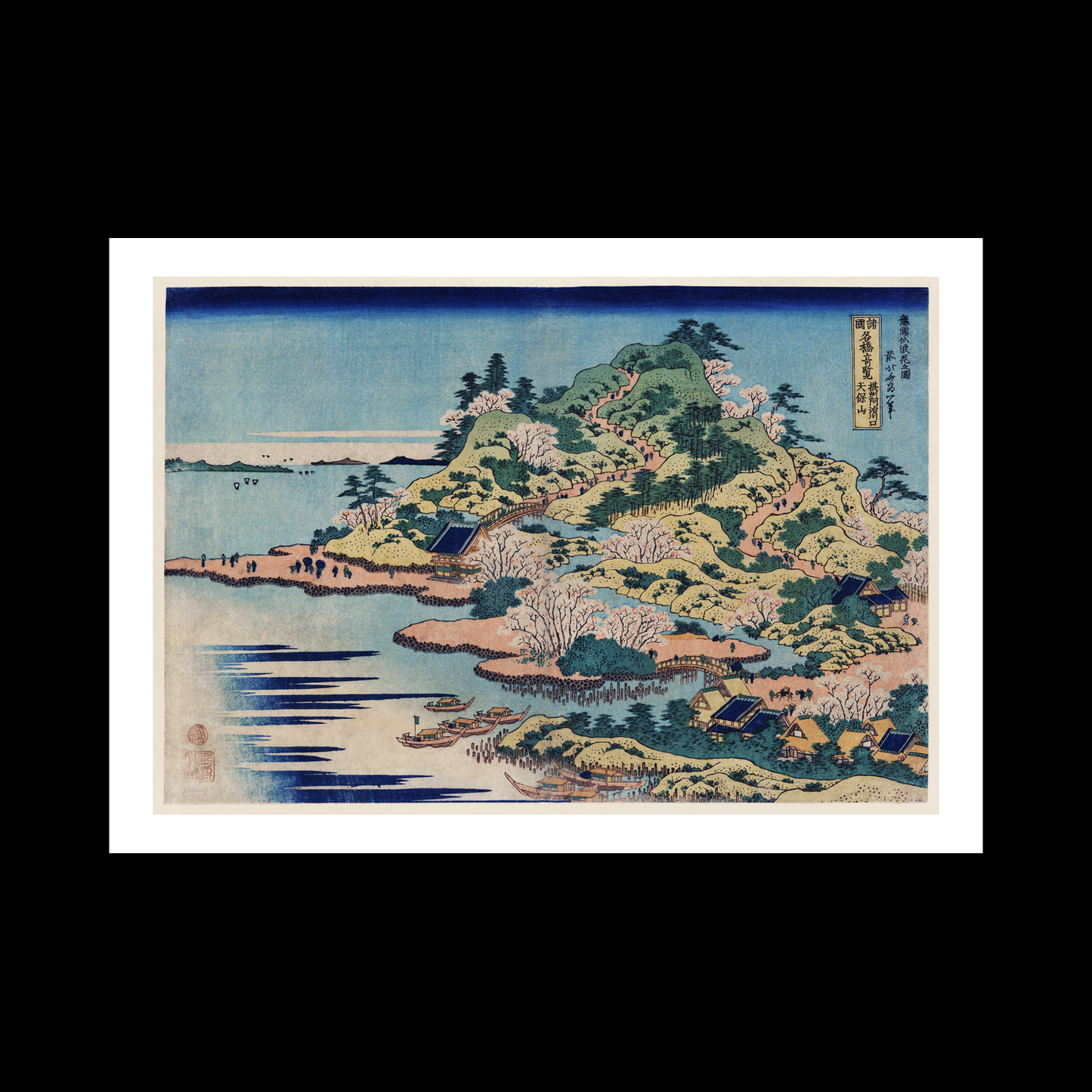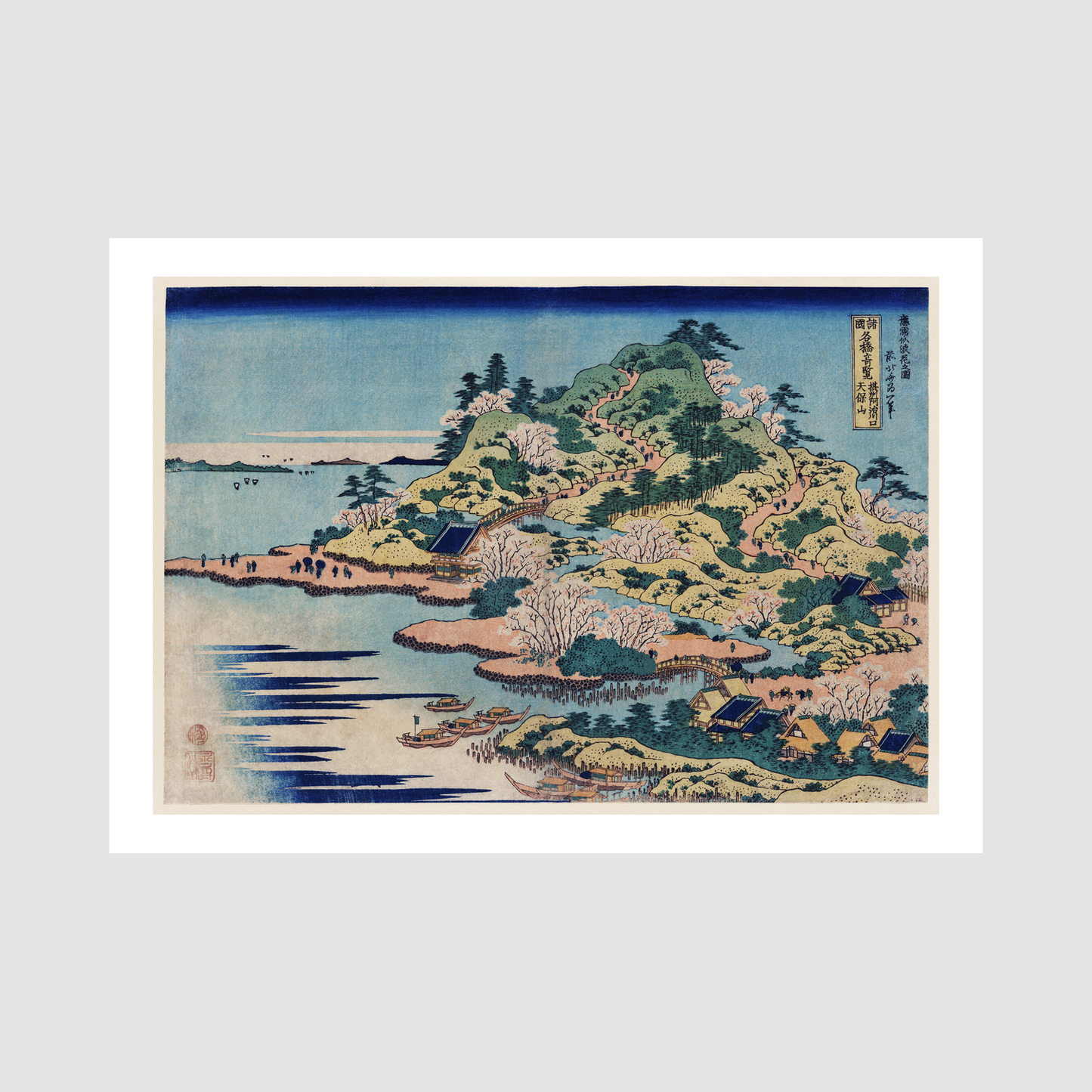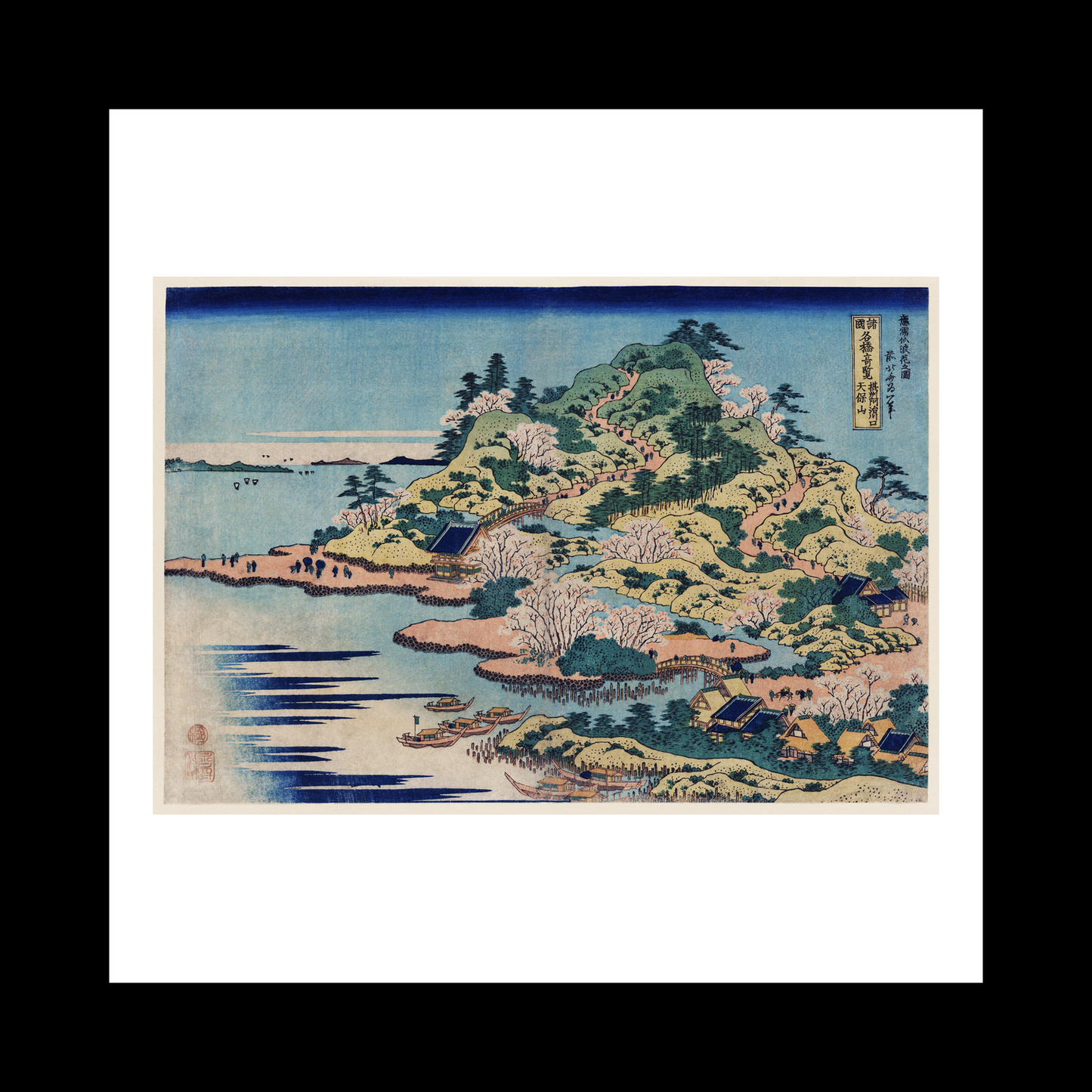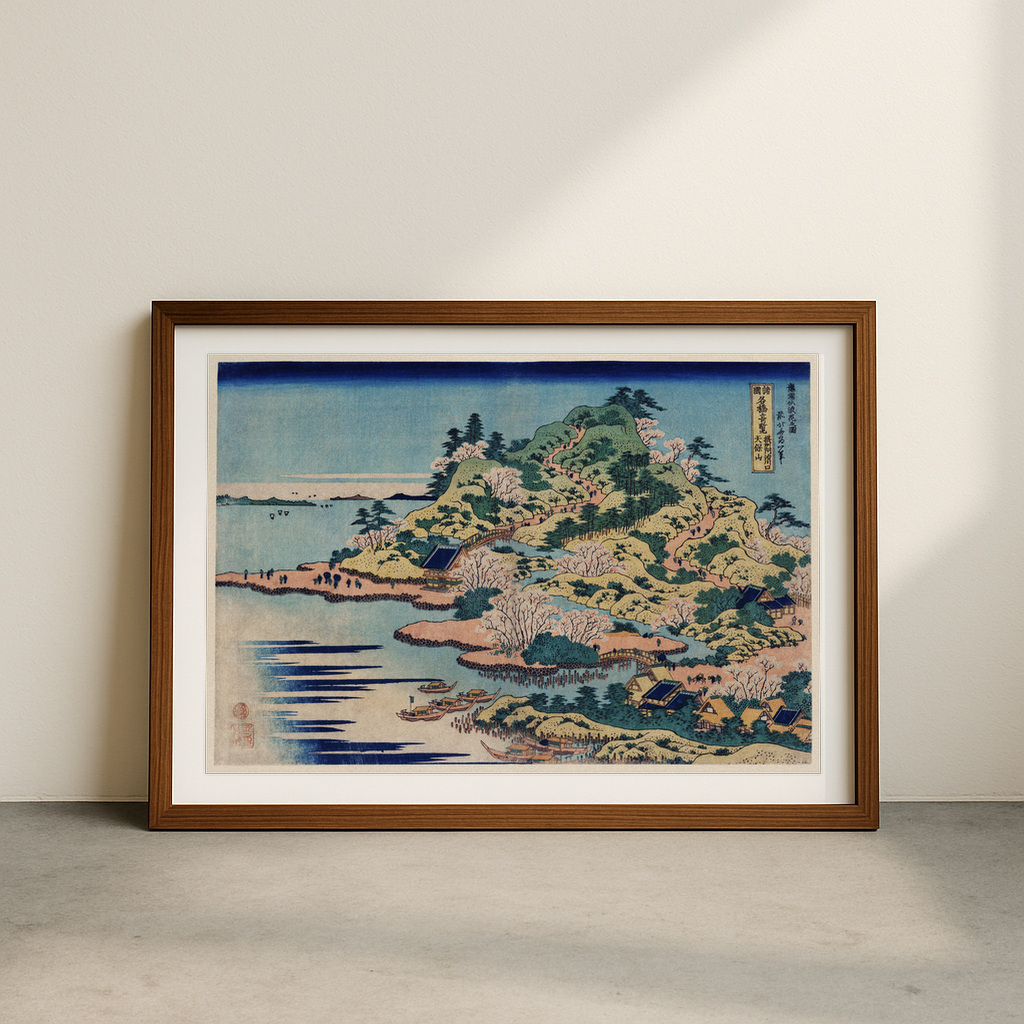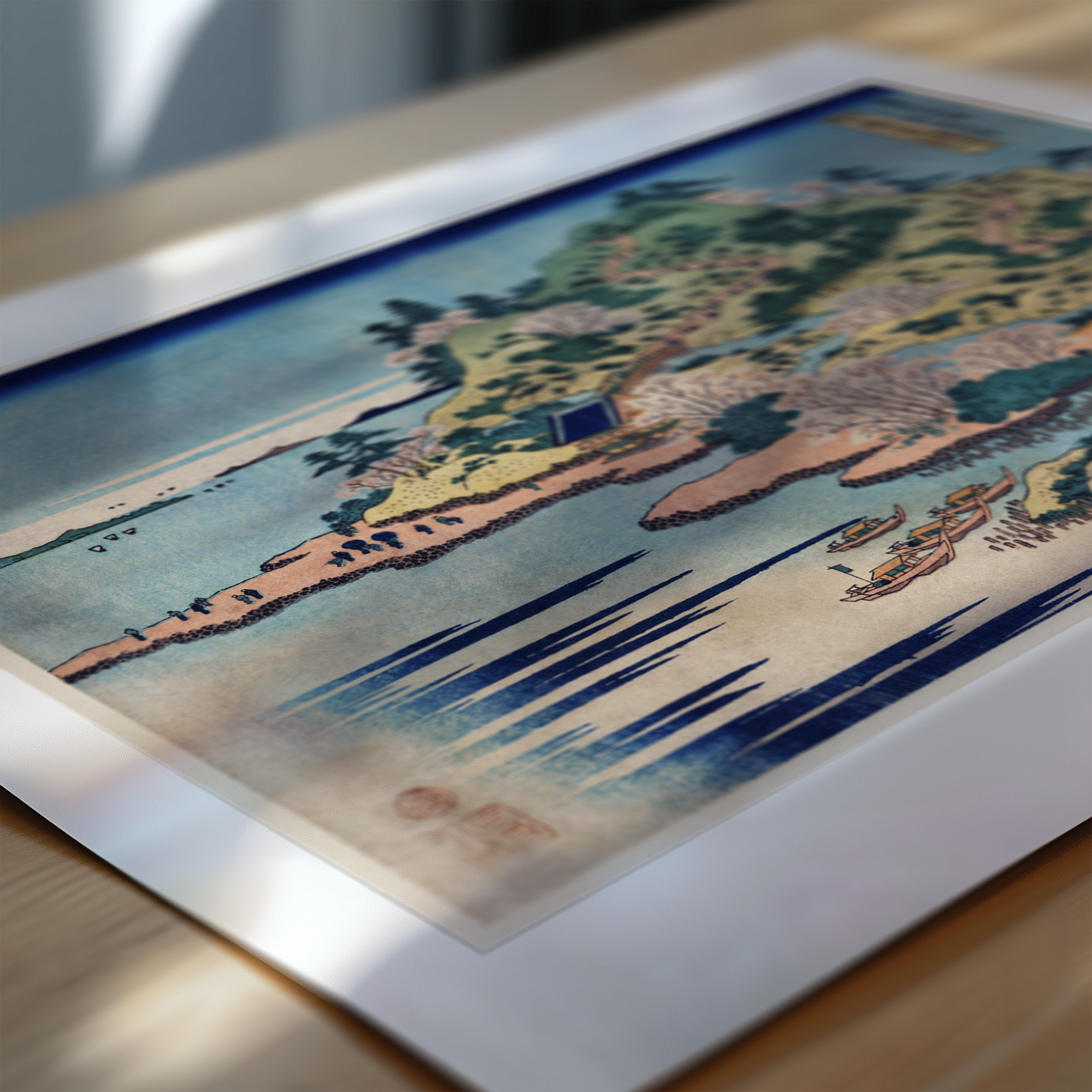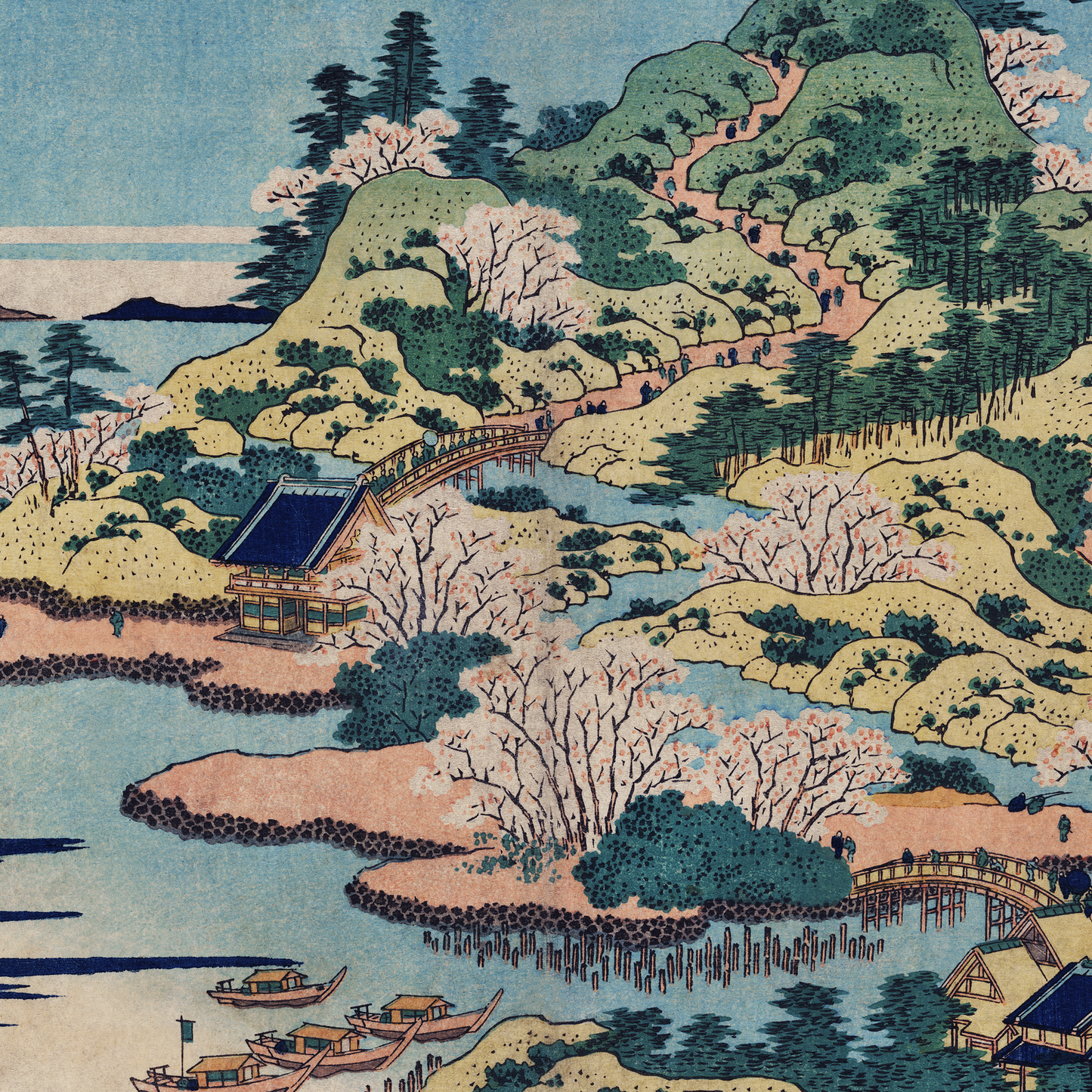1
/
of
6
Sesshu Ajigawaguchi Tenposan
Sesshu Ajigawaguchi Tenposan
Regular price
£12.45 GBP
Regular price
Sale price
£12.45 GBP
Taxes included.
Quantity
Couldn't load pickup availability
"Sesshu Ajigawaguchi Tenposan" showcases Hokusai's masterful command of the Ukiyo-e style, depicting a vibrant coastal scene where human activity harmoniously blends with nature. The composition draws viewers into a detailed landscape where pilgrims traverse winding paths towards island shrines, while fishing boats dot the shoreline. Hokusai's distinctive use of lines and perspective creates a dynamic sense of movement, while his careful attention to architectural details brings the spiritual significance of the location to life.
Created during Japan's Edo period, this work reflects a time when religious pilgrimages were an integral part of Japanese cultural life. Hokusai, known primarily for his "Thirty-six Views of Mount Fuji" series, often explored themes of spiritual journey and human interaction with nature. This particular piece captures the essence of Tenposan, a significant religious site that attracted visitors from across Japan, offering a glimpse into the period's social and spiritual practices.
The artist's technique demonstrates his exceptional skill in balancing detailed foreground elements with broader atmospheric effects. The careful gradation of colours and precise linework, characteristic of Ukiyo-e prints, creates depth and dimension. Hokusai completed this work during his later years, when his artistic style had evolved to incorporate more sophisticated spatial relationships and atmospheric effects. This piece particularly stands out for its ability to capture both the physical and spiritual aspects of pilgrimage, making it a significant example of Japanese landscape art.
View full details
Created during Japan's Edo period, this work reflects a time when religious pilgrimages were an integral part of Japanese cultural life. Hokusai, known primarily for his "Thirty-six Views of Mount Fuji" series, often explored themes of spiritual journey and human interaction with nature. This particular piece captures the essence of Tenposan, a significant religious site that attracted visitors from across Japan, offering a glimpse into the period's social and spiritual practices.
The artist's technique demonstrates his exceptional skill in balancing detailed foreground elements with broader atmospheric effects. The careful gradation of colours and precise linework, characteristic of Ukiyo-e prints, creates depth and dimension. Hokusai completed this work during his later years, when his artistic style had evolved to incorporate more sophisticated spatial relationships and atmospheric effects. This piece particularly stands out for its ability to capture both the physical and spiritual aspects of pilgrimage, making it a significant example of Japanese landscape art.
